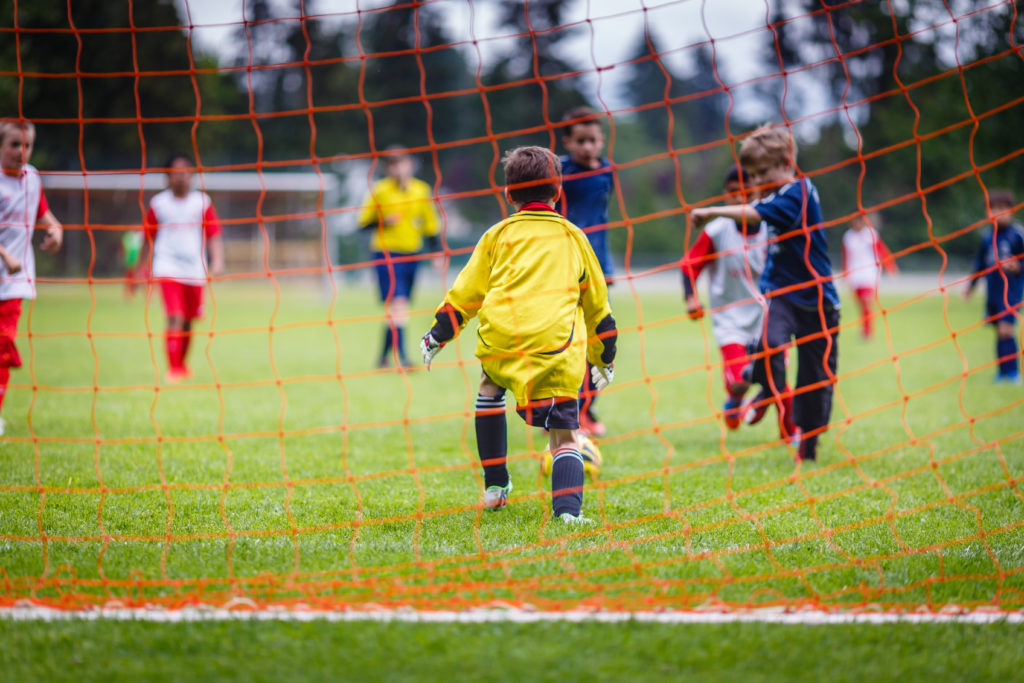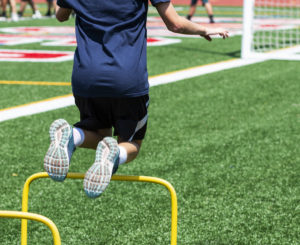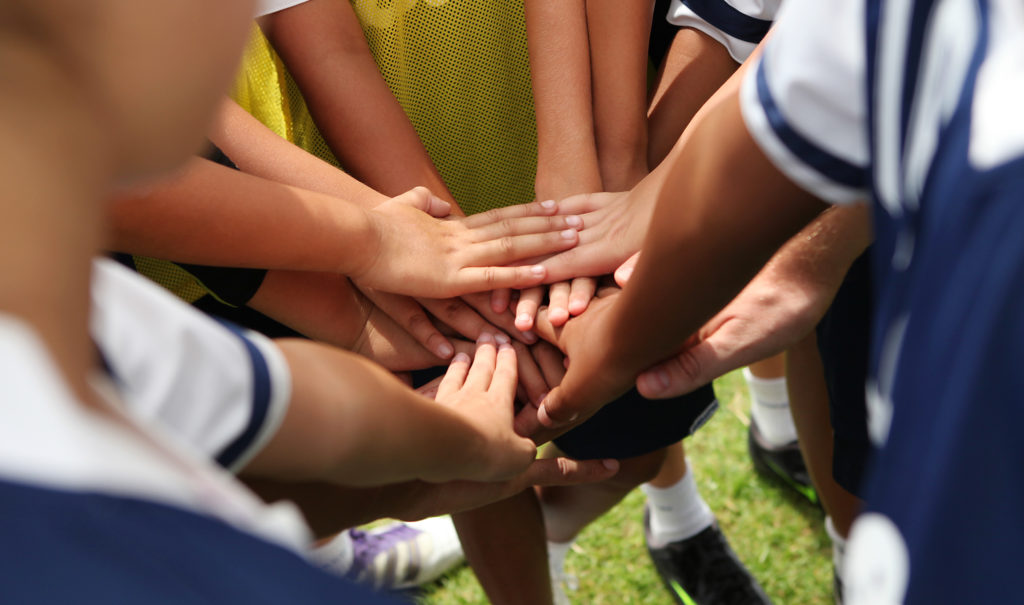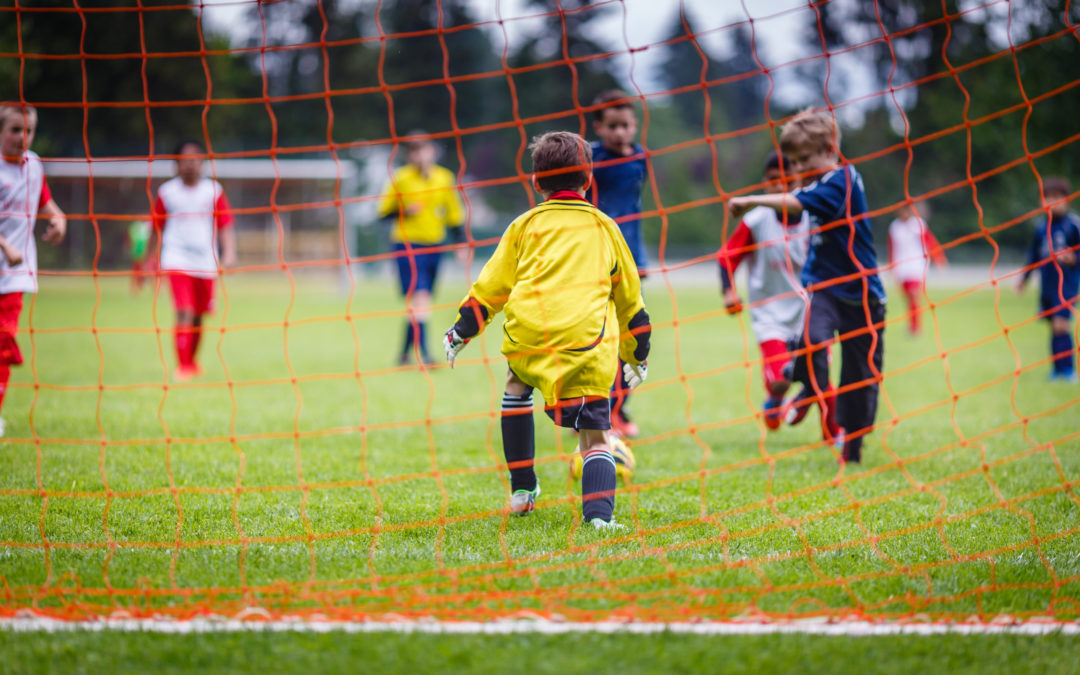
The ultimate reward for a youth coach is the sweaty smile we see when our young athletes experience success. This could come in the form of conquering a previously-difficult challenge; it could be a hard-fought win. Ultimately, it could come from a genuine enjoyment for the athletic experience.
Aside from creating a positive, encouraging environment, coaches that understand the importance of helping their young athletes get stronger have the opportunity to experience an embarrassment of riches when it comes to these rewards.
Athletic skills like speed, agility, and even mobility, come from a foundation of strength. Consider the fact that the little bodies running around the field or court in front of us are held down to the earth by backpack-like gravity. This backpack sits on them when they run, jump, climb, or perform any other upright activity.
Whether the goal is to help them run faster, jump higher, or perform any other athletic skill more effectively, we have to help them overcome the challenge of gravity. This may require slowing down and building the necessary strength and stability to support these athletic skills.
 For example, if we want to help a young athlete jump higher (a fast, dynamic movement) we should see if they are able to perform a slower, less dynamic movement – like a bodyweight squat. If they don’t have the strength, stability, and mobility to do this when speed isn’t a factor, it will most definitely negatively impact performance when it is. All the “jump specific” training in the world can’t overcome a weak foundation. Teaching and practicing squat technique provides a solid foundation from which jumping ability can improve.
For example, if we want to help a young athlete jump higher (a fast, dynamic movement) we should see if they are able to perform a slower, less dynamic movement – like a bodyweight squat. If they don’t have the strength, stability, and mobility to do this when speed isn’t a factor, it will most definitely negatively impact performance when it is. All the “jump specific” training in the world can’t overcome a weak foundation. Teaching and practicing squat technique provides a solid foundation from which jumping ability can improve.
This reigns true for nearly every athletic movement. When children have a poor strength-to-weight ratio, it becomes difficult for them to improve.
So, what can we do help them when we’re on the field or court, with limited time and equipment?
Strength training doesn’t require expansive facilities, expensive equipment, or extended periods of time. Something as simple as introducing some basic bodyweight strength exercises into training can pay big dividends, especially when a coach has the patience and knowledge to teach them correctly.
Organizations such as the American College of Sports Medicine, National Strength and Conditioning Association, and The American Academy of Pediatrics tout the safety and effectiveness of strength training for kids old enough to play sports (usually about 7 years old, but research has observed improvements with kids as young as 5).
Below are some guidelines from the above-mentioned organizations to ensure the safety and effectiveness of strength training for kids prior to puberty:
1. Coaches should become familiar with safe strength training protocols for kids to ensure a safe training environment with adequate supervision.
2. Begin any form of training with a 10-15 minute whole-body dynamic warm up.
3. Utilize 8-12 exercises that prioritize the largest muscle groups of the upper and lower body 2-3 days per week.
4. If children cannot perform 8 repetitions of an exercise, regressions should be utilized to make the movement more do-able. If they can perform more than 15 progressions should be used to make the movement more challenging.
5. Proper movement technique should be the priority of a strength program for kids.
Observing the above guidelines, here is an 8-exercise, whole body strength training program you can do right on the field or court:
1. Half Planks (8 repetitions with a 2-second hold at the bottom)
2. Step Up Squats (8 repetitions)
3. Bird Dog Rodeo (20 seconds on each leg)
4. Reverse Lunge (8-15 on each leg)
5. Swimmer (20-30 seconds)
6. No Hands Get Up (8-15 repetitions)
7. Push Up and Roll (8 repetitions)
8. 1-Leg Balance Reach (8-15 repetitions each leg)
Perform the above circuit 1-2 times through. Again, focus on the children’s ability to perform each exercise correctly. If they have difficulty, regress to static versions or modify the range of motion. If the exercises become too easy (assuming they are performing them with correct technique), increase static hold times by 10 seconds, have the athlete hold on to a medicine ball or weighted backpack, or progress to a more advanced/dynamic form of the exercise.
The exercises above in addition to the related regressions and progressions can deliver the rewards of sweating, smiling, smarter young athletes who continue to build confidence in their athletic skills.

Brett Klika CEO and co-founder of SPIDERfit is an international award- winning certified strength and conditioning coach, author, and motivational speaker with over 20 years experience motivating and inspiring youngsters to a life of health, fitness, and performance.
Brett consults with schools, athletic organizations, fitness professionals, and fortune 500 companies around the world.





Connect with SPIDERfit!